There are many types of cockroaches in California. 5 of these roaches are considered pests. These are the German cockroach, the American cockroach, the Turkestan cockroach, the oriental cockroach, and the Brownbanded cockroach.
Here are all common roaches found in California.
Table of Contents
1. American Cockroach
The American cockroach (Periplaneta americana) is considered a pest. This is the largest roach in California and also one of the most common in the state.
The roach is present throughout the entire country but it originates in Africa, unlike its name suggests.

This highly common California roach has 3 stages of development. It’s first an egg, then a nymph, and finally an adult. The roach is known for living a long and productive life. It enters a reproductive cycle once it reaches adulthood (typically after a few weeks). This reproductive stage lasts up to 600 days.
The American cockroach lays up to 150 eggs each year once it reaches its reproductive stage.
2. Oriental Cockroach

This black and brown roach is also considered a pest. It’s one of the roaches that are most difficult to get rid of. Even insecticides have reduced impact on these roaches as it kills adults but females can lay eggs and counteract the impact of the insecticide.
The roach has a black body and brown wings. Female Oriental roaches (Blatta orientalis) are larger than male Oriental roaches. Both the male and the female are highly dangerous to people.
These roaches live in damp places that are known for their bacteria levels. Living in places such as basements and drains, these roaches tend to carry all types of bacteria from dark moist places inside of the house. This bacteria is often transferred to food inside the house. As a result, Oriental cockroaches are considered a pest.
3. Turkestan Cockroach

These roaches are normally seen as outdoor cockroaches. However, Trukestan roaches (Shelfordella lateralis) are also seen as an indoor species in warm climates such as California. Their destructive habits make them one of the feared pest roaches of the state.
The roaches can be recognized by their dark red bodies with a rusty undertone. They are normally seen outside of the house where they live in large numbers. They often venture off inside the house in search of food.
Male Trukestan roaches tend to be highly problematic. They can fly and they use it in important moments of their lives such as when looking for females. But males mostly fly towards sources of light and this is the primary way Turkestan cockroaches make their way inside California homes.
4. Three-lined Cockroach
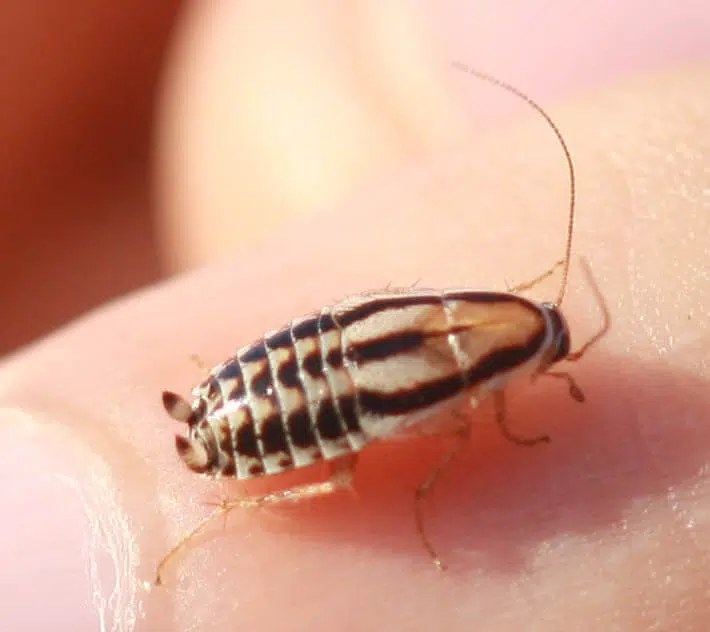
The Three-lined roach (Luridiblatta trivittata) gets its name from its striped back. It features black and light color lines on its back which makes it easy to recognize. Most Californians are likely to see it in the winter around the house. These roaches are small nymphs in the spring season.
The roaches prefer to live outside of the house. They don’t form colonies in the house. However, they are often attracted by food, particularly sweet food which might make them interested in getting indoors.
These roaches might be very common but they are very difficult to get rid of. There are no products made specifically for Three-lined roaches as they aren’t considered pests.
5. Western Wood Cockroach
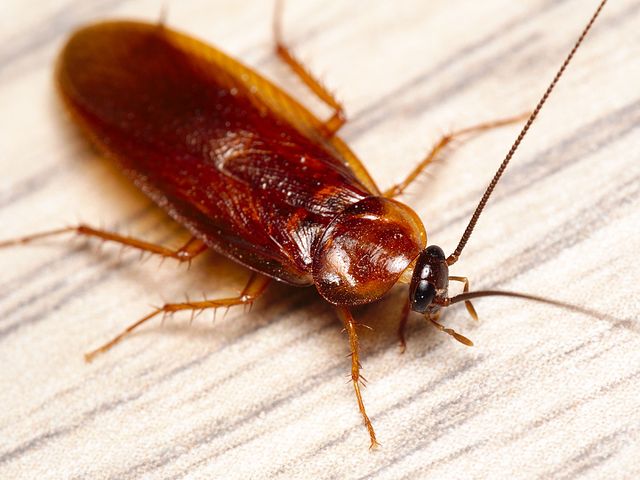
The Western Wood Cockroach (Parcoblatta americana) is one of the invasive species of the state. This roach is known for seeking shelter in the same nest as harvester ants. They even come out at night to eat leftover foods around the nest.
The roaches are mostly found in areas where harvester ants have sufficient food or in harvester ant habitats such as oak woods and grasslands. The roach has iron-red coloration and it rarely wonders inside homes. When it does, it’s mostly because it’s attracted by lights.
These roaches also live separate lives as females are found next to nymphs while males live on their own.
6. German Cockroach

The German Cockroach (Blattella germanica) is one of the most troublesome roach pests. It’s a feared type of roach given it likes to live indoors.
This species is known for living short lives. Roaches live up to 100 days from egg to nymph and into adulthood. However, their short lives are balanced by a reproduction success rate making them a very common roach in Southern states such as California and Florida.
There are multiple solutions used to eliminate the German roach from homes. Some of these are of chemical action which means homeowners might need to vacate the home during the process. While there are other mild solutions used to get rid of these roaches from homes, it’s generally believed low sanitation levels inside the house are a facilitator for German roach breeding.
7. Surinam Cockroach

The Surinam Cockroach (Pycnoscelus surinamensis) is also known as the Greenhouse Cockroach. This is one of the troublesome species of roaches in greenhouses, as its name suggests. It sometimes prefers to hide in greenhouses during the day. It then comes out at night and eats soft plants inside the greenhouse.
However, it’s not considered a pest since it rarely lives inside homes. Still, it’s a roach only associated with man-made structures as it prefers to live outdoors next to homes.
The roach is mostly found in the debris and other areas that are known for high moisture and low levels of sanitation.
Plenty of products are available for this roach. Plant sprays are the most common product for indoor use made to keep the Surinam Cockroach away from the house.
8. Field Cockroach

This species is native to Asia. It has made its way to North and Central America where it lives in dense vegetation. The Field cockroach (Blattella vaga) also makes its way inside homes in periods of high heart when there are low atmospheric moisture levels.
The roach lives a short life. Some of the longest-living Field roaches live up to 90 days.
It’s easily found in decomposing vegetation and it can be easily identified due to its contrasting body. Unlike vegetation, it has a shiny golden color with transparent white legs which makes it easy to spot even in dense vegetation.
9. Smoky Brown Cockroach

These roaches are known for losing moisture rapidly. This is why they make their way indoors or to any sheltered area when the temperature is high. However, the Smoky Brown roach (Periplaneta fuliginosa) is not adapted to cold climates which means it is only found in Southern states such as California.
This roach has a varied diet which is often comprised of decomposing mater. It also feeds on pet food and any food leftovers found around the house.
The roach has 2 reasons to get indoors. First, it will try to escape extreme weather conditions such as cold weather or high-temperature weather conditions. Secondly, it will also find its way indoors in homes where there’s rotting food or other readily available food sources.
10. Eremoblatta subdiaphana

This species is also known as the Hairy Desert Cockroach. It’s found in arid California climates as well as in just a few other Southern states such as Texas. The roach has a pale golden color with a hairy body. It also has brown transparent wings and it’s believed it can fly over short distances only.
11. Desert Cockroach
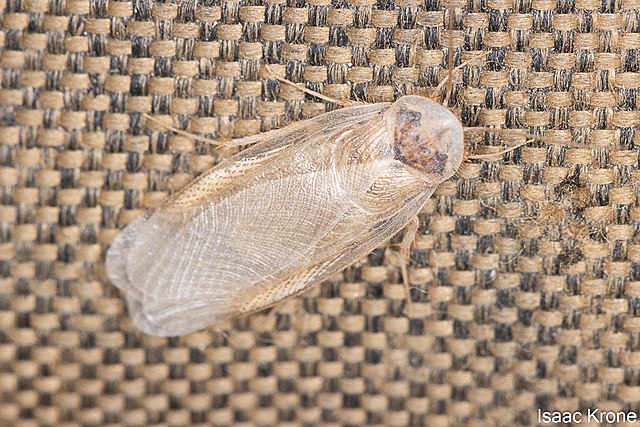
This species of roaches also lives in deserts and arid climates. The pale golden color of these roaches makes them often hard to distinguish when seen on the sand.
The Desert cockroach (Arenivaga investigata) is popular for its ability to absorb a lot of moisture from the air. This roach can absorb up to 80% of its body weight in moisture. It also has certain body mechanisms such as wax production to stop absorbing moisture.
The roach has also been shown to get warmer not in the Sun but during the process of absorbing moisture.
12. Brown-banded Cockroach

The Brown-banded roach (Supella longipalpa) is one of the populous pest cockroaches in California. It poses a real health threat in homes if not dealt with swiftly.
This roach is the most problematic in shared buildings such as apartment buildings as it makes its way from one apartment to another easily through cracks and by crawling under the door.
The roach is normally dealt with professionally by the use of pesticides. It has been shown pesticides are an efficient method of getting rid of its nymphs as well.
In other areas of the country, this roach has natural predators such as wasps. For example, it has been shown that Comperia Merceti wasps like to eat the nymphs of the Brown-banded roach.
Failing to eliminate the Brown-banded roach from homes is associated with multiple severe medical conditions such as allergies. The most important triggers from Brown-banded-related allergies include excrements and skin pieces.
13. Australian Cockroach

A similar roach that needs to be dealt with professionally is the Australia Cockroach. It differs from the Brown-banded roach as it prefers to live outdoors. However, the Australian roach (Periplaneta australasiae) is also tied to many health complications through excrements food contamination. It can even trigger allergies in people.
This roach is one of the species that live in proximity to homes, mainly due to the leftover food and garbage around the house.
It can be recognized by its brown body and brown head. Its brown head is distinguished by having 2 black markings.
The use of pesticides is an efficient method of eliminating Australian cockroaches from the yard and garden.
14. Arenivaga nalepae
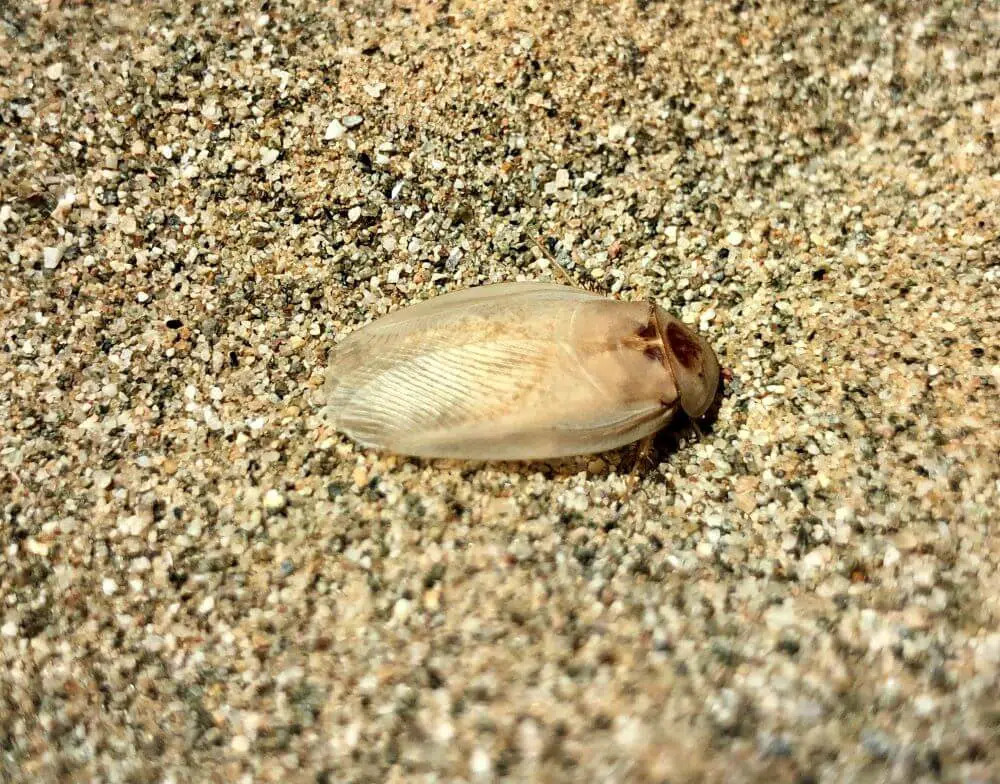
This species of roaches live in dry areas of California. It has an off-white sand coloration and it grows to a maximum size of 20.2mm. The roach is not seen in California homes unless fleeing low temperatures. It’s mostly seen around San Felipe and Baja California Norte.
15. Arenivaga tonkawa
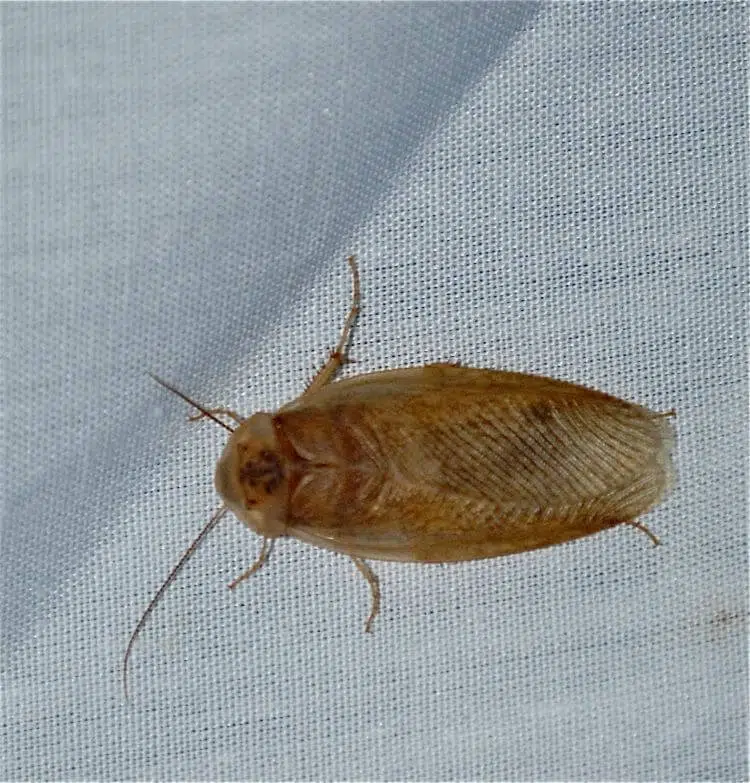
This type of sand roach is popular in California and Texas. It has a brown color and a rounded body when it reaches adulthood. However, this species is known for having a transparent body in its early lives which allows you to see its guts.
The male of the species cannot fly while the female can fly short distances.
This roach is mostly grown in containers as a food source. It’s grown as food for those with pets such as lizards.
16. Arenivaga sequoia
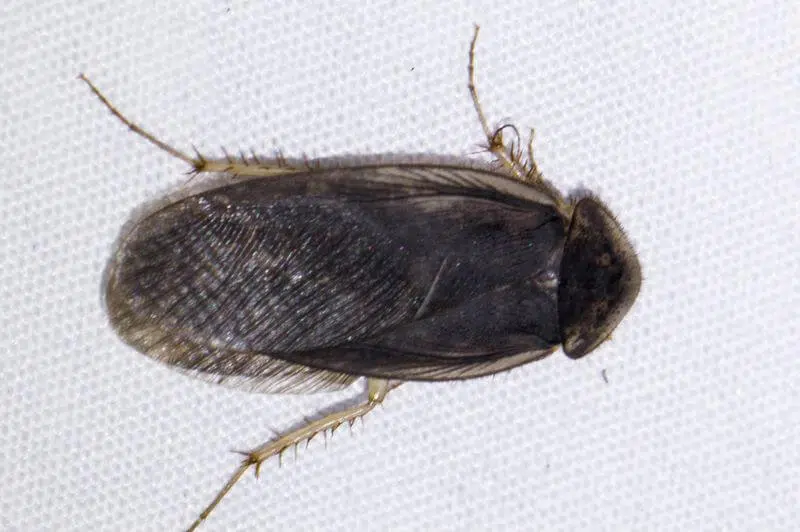
This species is only found in California. It’s believed it only inhabits Southern and Western California.
The bug is known for having a wide range of colors. Most of the time it has a chestnut color. But it’s also seen in a dark brown color. It’s also characterized by having long wings. Its wings are considerably longer than its body which leads many to believe it can fly.
17. Boll’s Sandroach

Boll’s Sandroach (Arenivaga bolliana) is a species of the Corydiiae family. This sand roach is mostly found in coastal California where it likes to live in the Sun, next to water sources.
It has a sand-like tan color with a striped body and small black markings. Its head is mostly black. The legs of the roach are brown and hairy. Due to its coloration, it’s sometimes hard to spot on the sand as it has a camouflage-like body.
18. Brown Cockroach
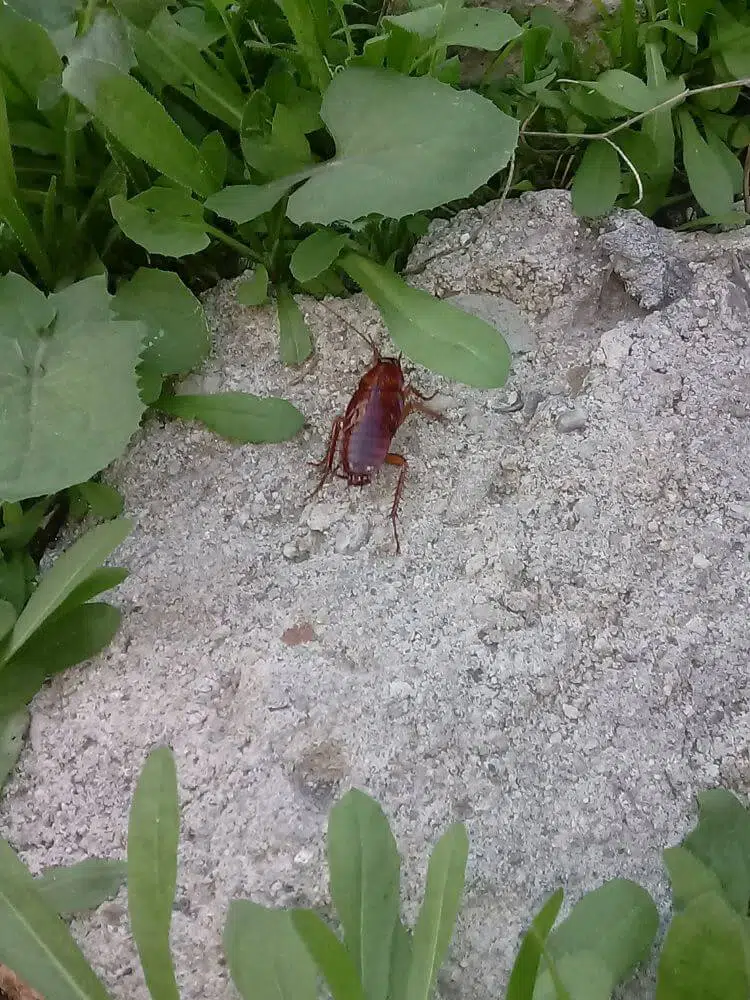
The Brown cockroach (Periplaneta brunnea) is often confused with the American cockroach. Both are brown and many dismiss it as the American roach.
However, the Brown roach is of African origin. It also has a shorter and wider body. Its brown body and brown head can sometimes have a red hue. One of its best attributes is its body size. The Brown cockroach often reaches a size of up to 2 inches.
It is considered a household pest as it likes to live indoors next to food sources. As an omnivore, it eats all types of fruits, vegetables, and meats found in homes. It prefers damp dark locations such as basements or areas behind furniture.
It needs to be exterminated as it causes health problems to people. This roach is not a prolific breeder as it lays up to 24 eggs at once. However, it’s still considered a pest as it solely lives indoors.
Further Reading: